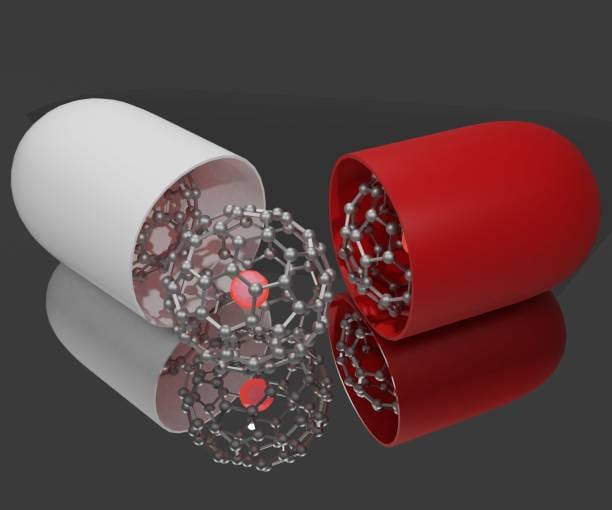Beneath the threshold of ordinary sight lies a universe that is reshaping our reality. It is a realm where atoms can be rearranged like puzzle pieces, where materials gain powers nature never intended, and where machines invisible to the human eye can operate inside the human body. This is the world of nanotechnology—the science and engineering of manipulating matter at scales a hundred thousand times smaller than the width of a human hair.
Nanotechnology promises to transform everything: medicine, energy, manufacturing, computing, even the future of life itself. Imagine targeted cancer treatments with molecular precision, solar cells as efficient as photosynthesis, or self-replicating nanobots building habitats on Mars. Yet, with such unprecedented power comes profound ethical dilemmas. How do we ensure these technologies serve humanity rather than harm it? Where do we draw lines in a field where lines are nearly impossible to see?
The nano-revolution is not a distant dream. It is unfolding now, quietly weaving itself into everyday products, scientific breakthroughs, and industrial innovations. But as with all revolutions, it carries the dual potential for progress and peril, forcing us to confront questions about safety, privacy, equity, and even the nature of being human.
The Birth of Nanotechnology and the Vision of Control
The story of nanotechnology begins with a spark of imagination. In 1959, physicist Richard Feynman delivered a visionary lecture titled “There’s Plenty of Room at the Bottom.” He described a future where scientists could manipulate individual atoms, creating machines and materials with properties entirely of our choosing. Decades later, advances in microscopy, materials science, and molecular engineering turned his dream into reality.
Today, nanotechnology encompasses diverse fields: medicine, electronics, energy storage, environmental science, and more. Researchers can design nanoparticles that deliver drugs only to diseased cells, engineer nanomaterials stronger than steel yet lighter than plastic, and develop quantum dots that revolutionize computing and imaging. It is a science that gives humanity control over the fundamental building blocks of the physical world.
But with control comes the ethical challenge of responsibility. Manipulating matter at the atomic scale means altering nature itself. What does it mean to wield such power? How do we manage risks we cannot see or fully predict?
The Double-Edged Sword of Nanomedicine
Perhaps the most celebrated application of nanotechnology lies in medicine. Imagine a world where diseases are detected before symptoms appear, where tumors are eradicated without harming healthy tissue, and where tiny machines repair cells from within. Nanomedicine brings this vision closer to reality, offering targeted drug delivery systems, nanoscale diagnostic tools, and regenerative therapies that could extend human health spans dramatically.
Yet ethical concerns shadow these promises. One dilemma is equity: advanced nanomedicine may be prohibitively expensive, accessible only to the wealthy or those in advanced nations. This could widen global health disparities, turning longevity and enhanced abilities into privileges rather than rights.
Another concern is safety. Nanoparticles can interact with biological systems in unpredictable ways. Their minute size allows them to cross cell membranes, enter the bloodstream, and even breach the blood-brain barrier. While this is useful for treatment, it also raises fears about toxicity, long-term accumulation in organs, or unforeseen genetic effects.
Moreover, the line between therapy and enhancement blurs in nanomedicine. If nanotech can boost memory, strength, or intelligence beyond natural limits, should it be used? Would society embrace human enhancement or resist it as a dangerous step toward engineered inequality? These questions are no longer science fiction—they are real, pressing, and unresolved.
Environmental Risks and Invisible Pollutants
Nanotechnology promises green solutions—cleaner energy, better water purification, sustainable manufacturing. However, its environmental footprint is not yet fully understood. Nanoparticles can enter ecosystems, soil, and water unnoticed, potentially accumulating in plants, animals, and the food chain. Unlike conventional pollutants, their nanoscale properties make them behave unpredictably, posing challenges for containment and cleanup.
Ethically, this presents a dilemma of precaution. Should we deploy nanomaterials widely before understanding their long-term ecological impact, trusting regulation to catch up later? Or should innovation be slowed until risks are fully assessed, potentially delaying life-saving technologies? The balance between innovation and caution is delicate, and history—from industrial chemicals to plastics—warns us that early enthusiasm often ignores hidden harms.
The Grey Goo Fear and Self-Replicating Machines
One of the most famous ethical debates in nanotechnology revolves around the concept of “grey goo”—a hypothetical scenario where self-replicating nanobots spiral out of control, consuming all matter in their quest to reproduce. Popularized by futurist Eric Drexler, this nightmare envisions a world devoured by runaway nano-machines.
Most scientists argue that grey goo is unlikely; the engineering challenges of self-replication are immense, and safeguards would almost certainly be built in. Yet the scenario highlights a real ethical principle: the possibility of loss of control. As nanotechnology approaches the capacity for autonomous nano-machines, questions arise about fail-safes, oversight, and the consequences of malicious use.
Could nano-assemblers be weaponized, creating invisible agents of destruction? Could rogue states or non-state actors harness nanotech for sabotage or warfare? The ethics of preventing catastrophic misuse is not science fiction—it is a matter of national and global security, demanding proactive governance before technology races ahead.
Privacy in a Nanotech World
Nanotechnology is shrinking sensors, cameras, and tracking devices to dimensions nearly impossible to detect. This revolution enhances security, medicine, and manufacturing, but it also threatens privacy on a scale never seen before. Imagine nanoparticles dispersed in public spaces that can monitor individuals without consent, or microscopic drones capable of surveillance beyond the reach of current laws.
Ethically, this raises profound questions about consent and autonomy. If nanotech enables constant monitoring of individuals’ health, movements, or behaviors, who owns that data? How can personal freedoms be preserved when surveillance becomes practically invisible? In balancing safety and liberty, society faces dilemmas that existing legal frameworks are ill-equipped to handle.
Equity and the Risk of a Nano Divide
Throughout history, transformative technologies—from electricity to computing—have widened social and economic divides before gradually becoming universal. Nanotechnology risks repeating this pattern on an even greater scale. Advanced nano-enhanced products, from superior medical treatments to ultra-efficient energy solutions, may be available only to wealthy nations or individuals.
This creates the ethical risk of a “nano divide,” where certain populations benefit from longer lives, enhanced abilities, and improved resources while others are left behind. International efforts to ensure fair access are emerging but face political and economic obstacles. As with vaccines during global pandemics, ensuring equitable distribution of nano-enabled healthcare and technology may test the moral fabric of nations.
The Human Identity Question
Nanotechnology has the potential not just to heal humans but to change what it means to be human. From nano-neural implants that augment cognition to bio-engineered cells that extend life, these advancements challenge philosophical and ethical boundaries of identity.
If nanotech allows us to modify our minds and bodies at will, where does natural humanity end and engineered humanity begin? Would altering human nature for the sake of enhancement erode individuality, dignity, or the meaning of life? Or would it simply be the next step in evolution, as fire, language, and tools once were?
Society must grapple with whether there should be limits to human enhancement and who gets to decide them. Without consensus, the nano-revolution could lead to moral fragmentation, where notions of humanity diverge irreversibly.
Governance, Regulation, and the Pace of Innovation
Navigating the ethical dilemmas of nanotechnology requires more than scientific innovation—it demands responsible governance. The challenge is immense: nanotech evolves faster than regulation, operates at scales difficult to monitor, and crosses international borders effortlessly.
Some propose precautionary bans or moratoriums on certain applications, arguing that unknown risks justify restraint. Others warn that over-regulation stifles progress that could save lives and solve pressing global crises. The truth likely lies in adaptive governance—flexible policies that evolve with technology, informed by scientists, ethicists, and public voices alike.
International collaboration is also critical. Nanotechnology does not respect borders; nanoparticles in one country’s water supply can travel worldwide. Global treaties, much like those addressing nuclear weapons or climate change, may become essential to manage risks and ensure benefits are shared.
The Promise Worth Protecting
Despite its dilemmas, nanotechnology holds extraordinary promise. It can make renewable energy more efficient, clean up pollution at the molecular level, and revolutionize medicine in ways that heal rather than merely treat. It could democratize manufacturing through nanoscale 3D printing, empower developing nations with advanced materials, and even help humanity survive beyond Earth.
The challenge is not to halt the nano-revolution but to steer it wisely. Ethical reflection is not an obstacle to progress but a guide to ensure that progress uplifts humanity rather than diminishes it. The history of science shows that when ethics are ignored, technology often harms before it helps. With nanotechnology, the stakes are too high to repeat those mistakes.
Toward an Ethical Nano Future
As we stand on the threshold of a future shaped by the smallest of scales, we face a paradox. Nanotechnology gives us power beyond imagining, yet its true impact depends not on what it can do, but on what we choose to do with it.
To navigate this future, we must foster global conversations that bridge science, ethics, philosophy, and law. We must teach future scientists to think ethically as well as technically. We must build policies that adapt to discovery without sacrificing human dignity or ecological balance.
Ultimately, nanotechnology reflects humanity itself—capable of wonder, creativity, and compassion, yet vulnerable to hubris and shortsightedness. Whether the nano-revolution becomes a story of healing or harm, of progress or peril, depends on the choices we make today, choices guided not just by what is possible, but by what is right.
The invisible realm of nanotechnology will shape visible realities for generations to come. In mastering the infinitely small, we hold the power to redefine the infinitely vast future of our species. Let us wield that power with wisdom, humility, and an unwavering commitment to ethical responsibility.






